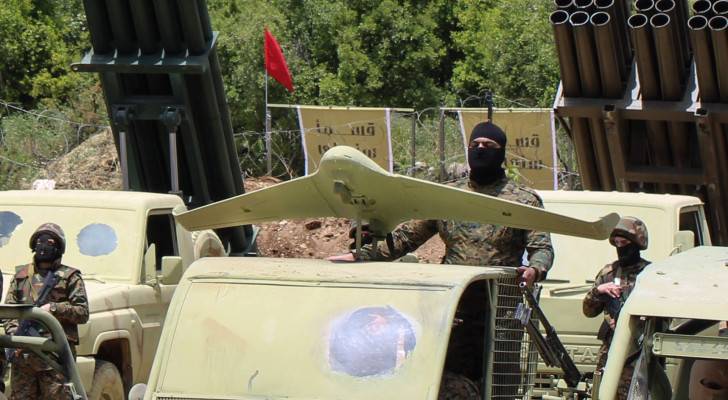Hezbollah forces
Hezbollah's arsenal: Closer look amid rising tensions
As the region braces for potential retaliation by Iran and its allies following the recent assassinations of Hamas political leader Ismail Haniyeh in Tehran and Hezbollah's Chief of Staff in Beirut, attention is turning to the military capabilities of Hezbollah, particularly if the southern front with Israeli Occupation is reopened.
Hezbollah's Military Capabilities
Hezbollah has spent years since the 2006 Lebanon War bolstering its arsenal and preparing for future confrontations. The group's capabilities include a variety of missiles, drones, and other weaponry designed to inflict significant damage on Israeli Occupation targets.
Missile Arsenal:
- Falaq-2 Missiles: These are part of Hezbollah's missile inventory, with the ability to launch multiple barrages intended to overwhelm Israeli Occupation's Iron Dome missile defense system.
- Daily Launch Capacity: Hezbollah reportedly has the capability to fire up to 1,500 rockets per day.
- Air Defense Systems: The group is equipped with Russian-made air defense batteries, along with Iranian-origin systems designed to counter air threats.
- Strategic Targets: Hezbollah has reportedly identified 280 strategic sites and headquarters in Israeli Occupation as potential targets for its missile strikes.
By the Numbers:
- 200,000 Missiles: This includes a significant number of precision-guided smart missiles with high destructive power, capable of striking deep into Israeli Occupation territory.
- Yakhont Missiles: Russian-made land-to-sea missiles that add a naval dimension to Hezbollah's capabilities.
- Thar Allah Dual Missile Launchers: Advanced anti-armor systems capable of targeting Israeli Occupation tanks and armored vehicles.
- Kornet Missiles: These are anti-tank guided missiles that have been used effectively in previous conflicts.
- Scud Missiles: Designed for long-range strikes, including potential anti-aircraft operations.
- Zelzal and Fateh 110 Missiles: Long-range missiles capable of reaching deep into Israeli Occupation territory.
- Fajr 3, Fajr 5, and Khaibar/Raad 2 & 3 Missiles: Medium-range missiles with ranges up to 100 kilometers.
- Grad Missiles: Short-range rockets with a range between 15 to 20 kilometers.
- Locally Manufactured Borkan Missiles: Short-range missiles equipped with warheads weighing between 300 to 500 kilograms.
Drone Capabilities:
- 2,000 Multi-Purpose Drones: Hezbollah's drone fleet is diverse, capable of both surveillance and attack missions.
- Assault Drones: These drones are armed with high-explosive warheads designed for targeted strikes.
- Distraction Drones: Deployed to divert enemy air defenses, making way for other drones or missile strikes.
- Heavy-Lift Drones: Capable of carrying up to 1,500 kilograms of explosives, significantly increasing their destructive potential.
- Long-Endurance Drones: Some drones can remain airborne for up to 35 hours, flying at speeds of 250 knots.
Strategic Implications
Hezbollah’s arsenal highlights the significant threat it poses to Israeli Occupation, with a wide array of capabilities designed to target both military and civilian infrastructure. The potential for a new conflict, particularly if the southern front is opened, would likely lead to widespread destruction and escalation across the region.
As tensions remain high, the international community watches closely, knowing that any military action could trigger a broader conflict, with severe consequences for the entire Middle East.




